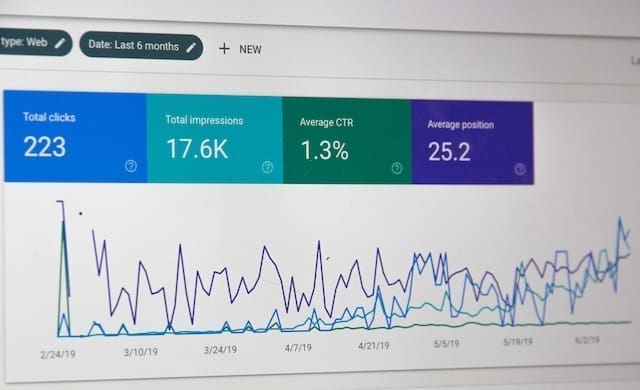You’ve heard how important it is to optimize your website for search engines. But maybe you’re not sure where to start when it comes to WordPress SEO.
Don’t worry! This comprehensive guide will break down everything you need to know about optimizing your WordPress site for SEO.
What Is WordPress SEO?
WordPress SEO is the practice of optimizing a website built on the popular content management system for search engines like Google and Bing. The goal is to make sure that each page on the site is optimized for search engine algorithms so that they can be indexed properly and appear higher in SERPs (search engine results pages).
Why Is WordPress SEO Important?
In today’s digital age, having an optimized website is a must.
If you don’t make use of the right SEO tactics, your web pages may not even show up in searches or may appear much lower than those from competitors who have taken extra steps to boost their websites’ visibility and performance.
WordPress SEO allows businesses to increase their visibility online and further establish brand identity through high rankings in organic searches, related to their products or services.
By optimizing your website for keyword-rich searches, you ensure that potential customers can quickly and easily locate what they’re looking for. Over time, this leads to increased conversions from organic sources as more people discover your business.
Furthermore, if your website has been optimized for SERPs, the trust of visitors and the credibility of your website is strengthened.
Achieving a high rank on SERPs indicates greater website authority and reliability. This results in visitors spending more time engaging with your content and visiting other web pages.
Ultimately, optimizing your WordPress site can be beneficial for reaching a larger audience. This is due to the increased visibility of your page in searches, leading more people to click through and visit it. With time, this will result in an increase in leads and sales for you.
How To Do WordPress SEO
There are several steps you can take to optimize your WordPress site for SEO:
1. Choose an Appropriate URL Structure
URLs should be short and descriptive and use keywords related to the topic of the page.
Additionally, URLs must contain lowercase letters and avoid using numbers or special characters if possible. URLs should be easy to read and remember.
2. Optimize Images
Images should be optimized for the web before uploading to your site.
This means compressing images to reduce their file size and adding relevant alternate text (alt-text) descriptions for screen readers.
3. Add Alt Text
Alt text adds additional information about an image.
This helps search engines understand what the image contains so that it can be indexed properly within SERPs.
When users perform image searches related to those topics or keywords used in alt-text descriptions, your images are more likely to show up, giving you additional exposure.
4. Create Content Regularly
Content is key when it comes to SEO. The more relevant and interesting information you can provide, the more likely people are to visit and stay on your website.
Regularly adding new content also helps ensure that search engine crawlers will visit your website frequently.
5. Optimize Page Titles and Descriptions
Page titles should include keywords related to the content on that page, and be no longer than 60 characters long.
Meta descriptions appear below the title in SERPs and give searchers more information about what to expect from clicking through to your website.
Descriptions should be around 155 characters long and provide an introduction or summary of what readers will find on that page.

6. Build Links
Link building is the process of acquiring links from other websites back to your own.
This is often done through guest blogging or by providing high-quality content that other people will want to link to. Link building helps improve rankings in SERPs as well as strengthen your website’s authority and trustworthiness.
7. Set Up Cloudflare
Cloudflare speeds up website loading times by routing visitors to their nearest server. This helps reduce page load time and can improve SEO ranking as search engines take page speed into account when determining a website’s rank. By following these steps, you will be well on your way to optimizing your WordPress site for SEO and increasing organic traffic.
Learn more about Cloudflare Configuration with our Ultimate Cloudflare Guide
8. Install SEO plugins
Plugins can help make the process of optimizing your WordPress website much easier, by allowing you to quickly change page titles and descriptions, add meta tags, etc. SEO plugins also allow you to monitor website analytics such as keyword rankings and overall traffic flow.
Yoast SEO is the most popular plugin for WordPress. It offers a variety of features and tools such as keyword research, content analysis, sitemaps, and more that can help you optimize your website in no time!
9. Add XML Sitemaps
An XML sitemap is a file that tells search engine crawlers which pages on your website are most important so they can be indexed properly.
Submitting your sitemap.xml file will ensure that all of your web pages are indexed properly on SERPs and can be found by users when they’re searching for relevant topics or keywords related to what you offer.
10. Monitoring and tracking
It’s important to keep track of your SEO progress over time so that you can make necessary adjustments along the way.
You can do this by monitoring your SERP position and using web analytics software to track your organic traffic levels.
Final Thoughts
By taking the time to properly optimize your WordPress website, you can expect to see improved organic search results, increased web traffic, and better engagement with visitors coming to your site focused on what they are looking for. This can lead to higher conversions and an overall stronger online presence.









